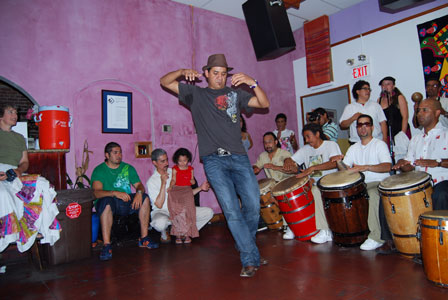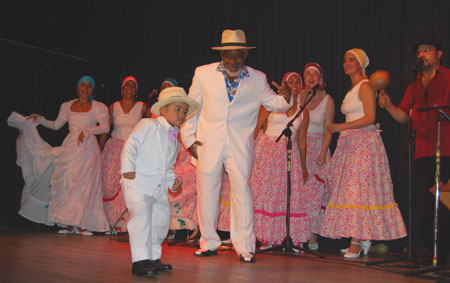Bay Area Boricuas
Puerto Rican arts and culture
 Bay Area Boricuas is a nonprofit, grassroots, community-based organization dedicated to promoting the study of Puerto Rican culture, history, and art forms in the San Francisco Bay Area through the development of education, social jsutice, and cultural arts programming. With roots in the Puerto Rican student movement of UC Berkeley, young Puerto Ricans formalized Bay Area Boricuas’ mission in 2000.
Bay Area Boricuas is a nonprofit, grassroots, community-based organization dedicated to promoting the study of Puerto Rican culture, history, and art forms in the San Francisco Bay Area through the development of education, social jsutice, and cultural arts programming. With roots in the Puerto Rican student movement of UC Berkeley, young Puerto Ricans formalized Bay Area Boricuas’ mission in 2000.
Bay Area Boricuas’ main programs include Panita Boricua, a mentoring project matching high school-aged Puerto Ricans with Puerto Rican college graduates to ensure students successfully finish school; hosting several community education events every year, including an annual holliday celebration, the Grito de Lares; and serving as the fiscal conduit for Cacique y Kongo, a local bomba music and dance performance group which works in collaboration with La Pena CUltural Center to hold weekly bomba and plena classes.
As a grantee of ACTA’s Living Cultures Grants Program in 2007, Bay Area Boricuas received funds to support their Encuentros de Maestro project, a year-long educational project that will explore bomba. Weekly song, percussion, and dance workshops with local artists culminated with the visit of Modesto Cepeda and Gladys Camara, tradition bearers of bomba, who taught a series of master workshops in July 2007.
In 2008, Bay Area Boricuas received a grant from ACTA’s Living Cultures Grants Program to support their La Bomba es Nuestra project, a year-long series of exucational workshops on the bomba, highlighting the traditionally marginalzied regional bomba traditions from the southern, easter, and northern coasts of Puerto Rico. The programming focused on women practictioners of the bomba, in an effort to support their growth and development as musicians, singers, and dancers. The project supported the preservation of traditional cultural art forms as guest masters worked with students to pass on important oral traditions. The project was designed to build bridges with Puerto Rican communities in San Diego and Los Angeles.




